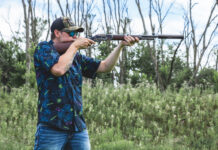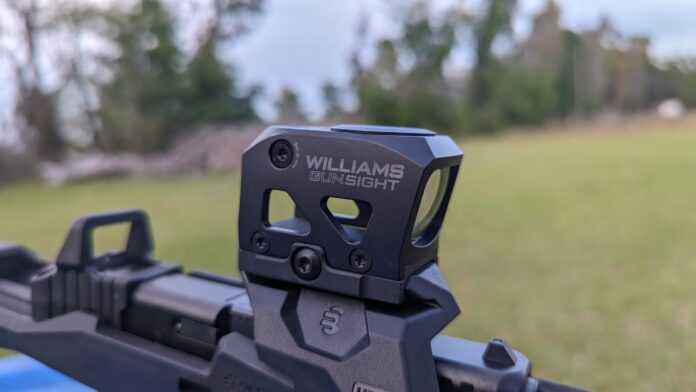
Williams Gun Sight might not be a familiar name to the non-hunters in the audience, but it made its name with high-visibility and easy-to-see iron sights. The company is very well known in that field and was revolutionary with its original Firesights, which are still popular. They aren’t an optics company. I’m sorry, they weren’t an optics company. They are now. The Williams Gun Sight LRS is the company’s latest and greatest gun sight and first red dot optic.
LRS stands for Low Reflex Sight. At first glance, you might think it’s an enclosed optic, but you’d be wrong. You might also assume it’s a pistol optic, but you’d be wrong again. Well, you’d be mostly wrong. The LRS is not an enclosed red dot, but there is a cage around it. The reason for the cage comes from the low profile design. The LRS is basically a mini red dot flipped upside down. The roof of the optic contains the emitter.
How Low Can You Go?
How low does Low mean with this sight? It’s easily the lowest red dot sight on the market. The key to the whole design is the upside-down design and unique attachment method. Instead of using an established normal rail mounting system, the legs of the optic’s body mount directly to your Picatinny rail adapter or specific shotgun adapter.
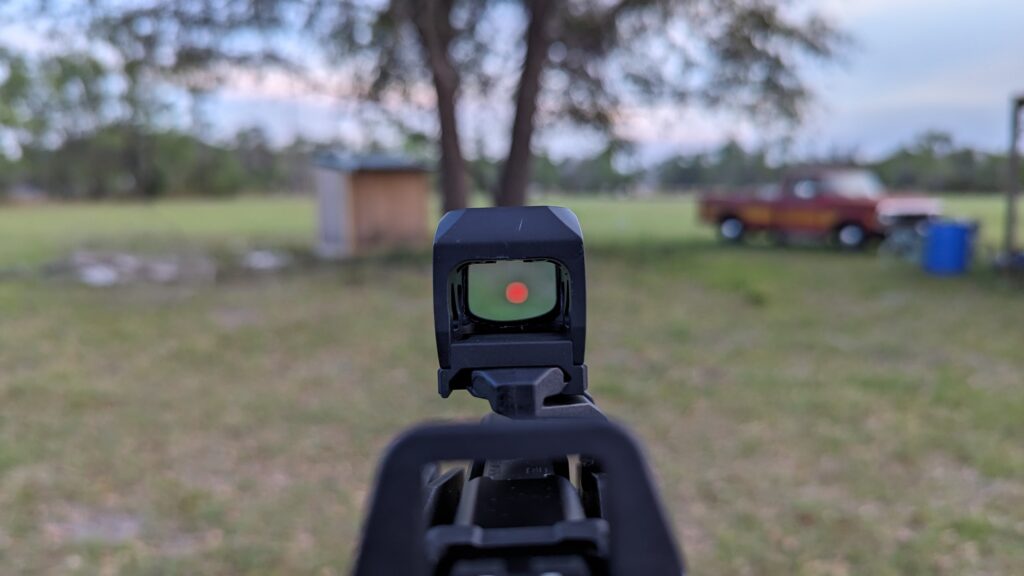
There is no optic body, so it sits about 30% lower than the standard red dot. I mentioned shotgun mounts, and it’s worth mentioning that the LRS was made with the intention of utilizing standard shotgun stocks and Monte Carlo-style stocks that position the head lower than normal. The LRS isn’t designed or tested for reciprocating slides. The design is unique, and it doesn’t seem possible to attach it to a reciprocating slide anyway.
The LRS will work on pistols like the Buckmark or Ruger MK series. They’ll also work on my Glock 43X turned PDW. This setup uses the Recover Tactical 20/20 as its base. The RT 20/20 has a separate optics mount, but in the interest of keeping the kit as compact as possible, I want an optic that sits as low as possible. The LRS had fortuitous timing to land when my PDW experiment started. Fortuitous for me anyway.
Blasting Away With the LRS
With the optic mounted and sitting low on the gun, I began the zeroing process. In those first shots fired, I noticed that the optic had a very light notch filter. There is a slight blue tint, but not terribly so. The reticle is a non-traditional but ultimately very nice circle and dot design. It’s a segmented circle that’s cut in half, and there is a small dot in the center. The dot has a 32 MOA design, and in the center sits a 3 MOA dot.
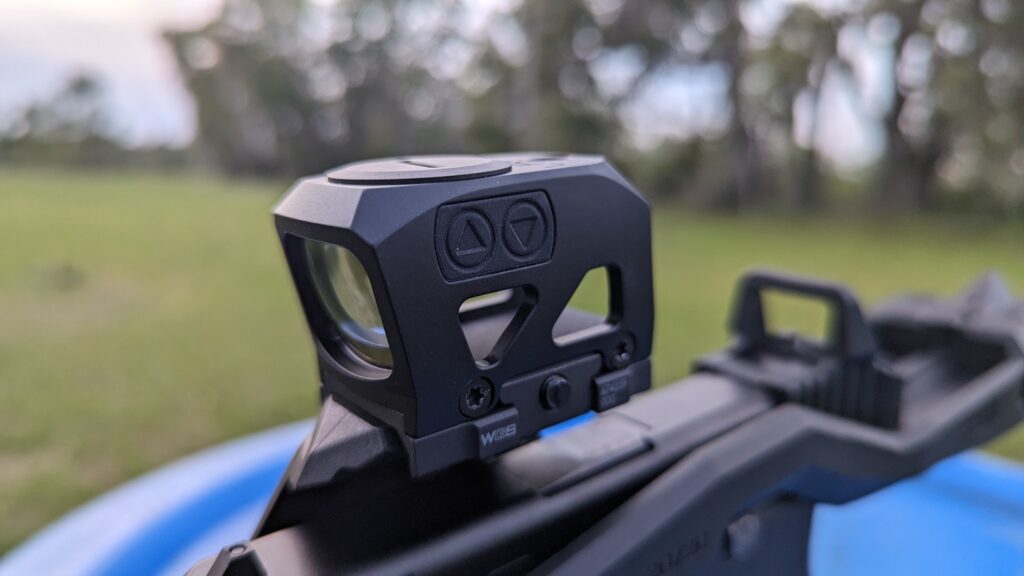
It’s big, easy to see, and can get crazy bright. In fact, it gets impressively bright for an optic that falls into the budget price point. There are six total settings for brightness, and it provides enough range of brightness to be easy to see in any lighting condition I’ve encountered. The optic has an auto shut-off after six hours of use, but the optic doesn’t have a shake-awake design, which is its real Achilles heel. This makes it tough to use for home defense because you might have to manually turn the optic on when the gun is needed.
Zeroing was quick and easy, and once the LRS was zeroed, I was ready to rock and roll. I began blasting away at fifty and twenty-five yards and moved back to fifty. I had no trouble staying on my target at fifty yards. The bigger pain was issues with the RT 20/20, but that’s a different story for a different day.
Staying Low With the LRS
For close-range snapshots, the 32 MOA circle worked quite nicely. At the beep, all I needed to do was get the big circle on target and pull the trigger. If it’s a man-sized target, all you need is a good portion of the target in the circle, and you’ll land hits. The LRS held a steady zero and made it easy to produce good tight groups. The big reticle will obscure small targets at longer range, but this is most certainly a close quarter’s optic, so there isn’t a big concern to me.
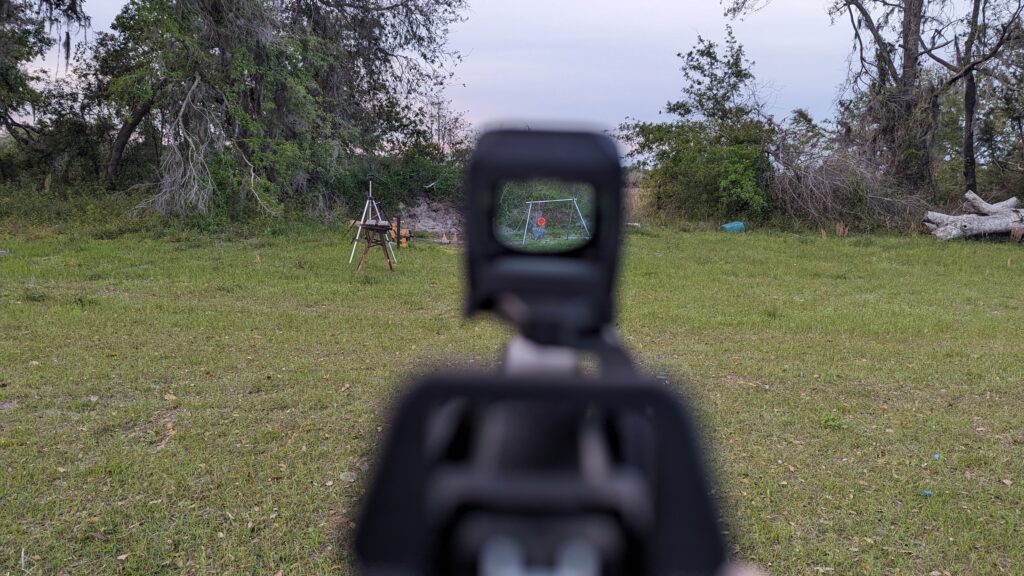
Williams Gun Sight sent a Mossberg shotgun mount, which was super easy to attach to my Mossberg 590 in 20 gauge. The mount keeps the LRS even lower than the Picatinny rail adapter. A low mount on a shotgun means a low cheek weld, which is a more comfortable sight picture. The 32 MOA reticle is also perfectly suited for buckshot and provides a reticle I can pattern my ammo into.
A Niche Option
The Williams Gun Sight LRS would be mounted too low for most other weapons. It’s not going to be the best option for many firearms. It’s too low on guns like the Scorpion and most certainly too low for an AR-type rifle. The LRS is most certainly a niche optic, but I appreciate the original design and the ease of use. It might not be for everyone, but it’s well-suited for shotguns and apparently even PDWs. Check it out here.

